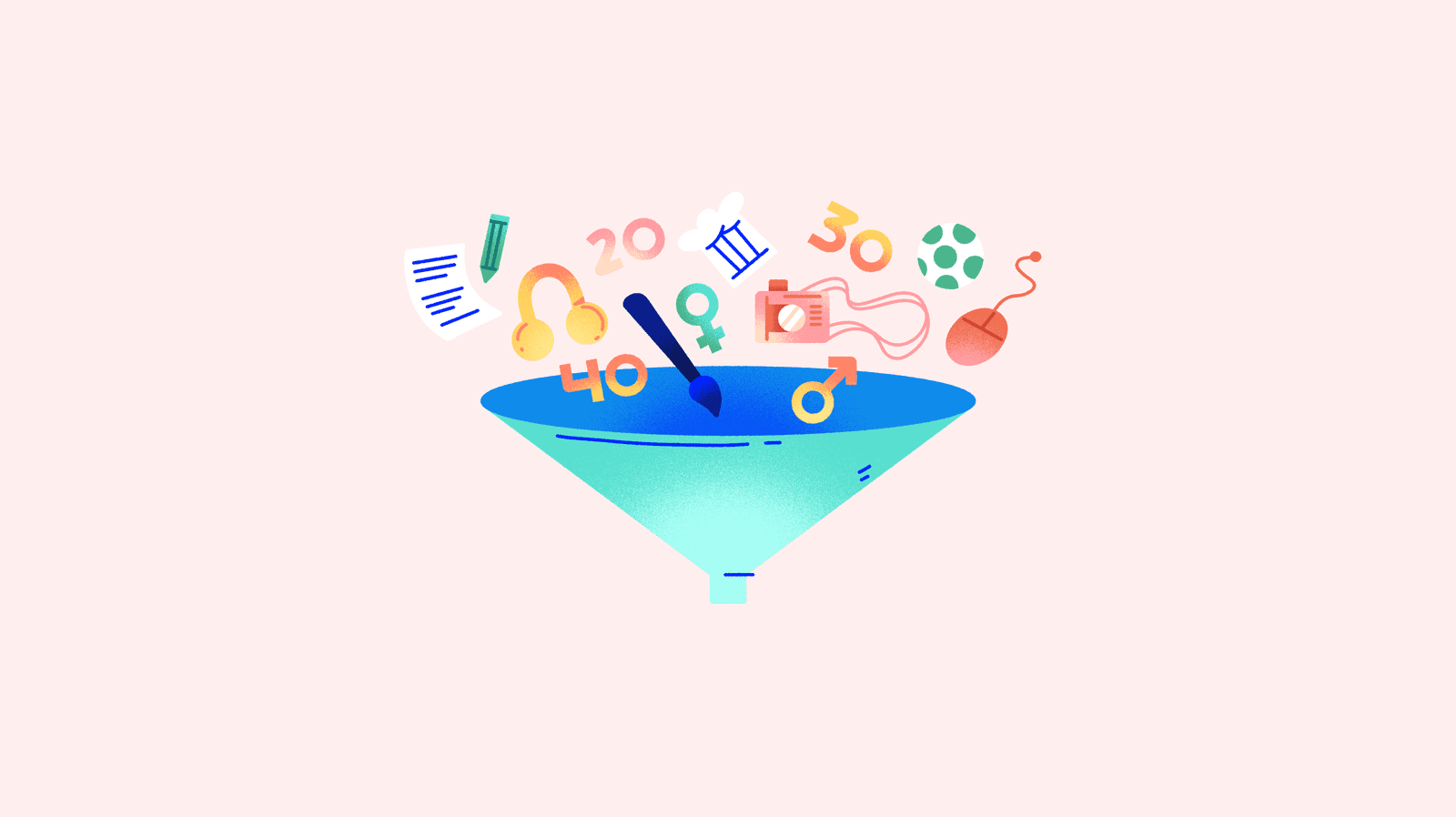
Have you ever tried on clothing from a “one size fits all” shop?
If you answered yes, you'll know for certain that it’s just not true: there’s always a part of the garment that’s too loose or too tight.
The same thing happens with email marketing: there is no such thing as a single email message that works for all customers and brings about sales every time.
What is segmentation in email marketing?
Segmentation in lists and email marketing campaigns is a strategy that divides a customer database into smaller groups and adapts contents to their profiles and interests.
Companies that are just beginning to build their list of customers and have few contacts can lower their efforts and use the same email template for everyone. But as soon as the customer base begins to grow and diversify, segmenting the contents that you send by email becomes fundamental.
What’s more, it’s a great way to really get to know your customers, study the groups into which they can be divided, and discover which ones are more profitable for your business.
Creating segmented contents does entail a greater effort and more preparation, but it also can pay off in the form of getting your customers and users more satisfied and identified with your brand. Instead of a typical “cookie cutter” email, being specific is where it’s at in this day and age.
The magic word is ‘customization’ —that necessary quality in the online experience, purchase processes, and, of course, contact with customers.
Segmenting does not mean having to write each email by hand and racking your brain to change the style of twenty different messages. What it does mean is knowing your main groups of customers —both the active ones and the inactive ones— and adapting the contents of your newsletters and contact emails effectively.
→ You may also be interested in: why digital marketing is key to omnichannel sales
Benefits of segmenting your email marketing campaigns
According to a study by Mailchimp on 2,000 users of its email marketing management platform, 75% of email recipients are more willing to open an email from a segmented campaign than from a non-segmented one. Additionally, the click-through rate on the message’s contents is 100.95% greater.
And you’re not only after a click to take the user to your website or online shop, but you also want to avoid the feared click on the “Unsubscribe” link. MarketingSherpa says that 21% of the users who unsubscribe from a list feel that the contents of that list is not relevant, and 17% believe that the emails are, simply put, boring.
A good segmentation strategy may help you to keep that 38% of weary subscribers.
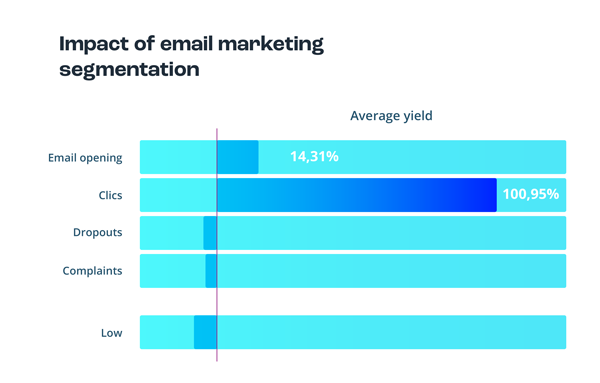
If the numbers don’t really do it for you, even though they somewhat speak for themselves, here are all the reasons why segmentation means success in email marketing.
- Dual action: It can be used to both provide incentives for more active users’ activity and to reach the more passive customers.
- Greater brand relevance: As you are making content that is adapted to different types of users, your brand prestige improves; recipients feel more satisfied with the personal feel of the emails and you can adapt at any time to changes in interests and trends.
- Standing out in the inbox: Repetitive emails that are not very original end up in the spam filter or are left unseen by users who are quick to look through their messages. Segmentation —because it uses resources aligned with the customer’s interests— allows you to stand out more from the dozens of promotional emails that someone can get each day. Also, email verification tools like ZeroBounce help keep your email list updated, reducing bounce rates.
- Personalized promotions and sales: Even when launching general campaigns, your emails can adapt to different groups to grab people’s attention more effectively —like products for men or women from your catalog.
- No repetitions: There is nothing more annoying for a user than receiving news about something that he or she already knows. With a segmentation strategy, you can keep a customer from receiving a product that he or she has already purchased as a suggestion or a promotion (and that will help you to avoid anger if the customer sees that a product purchased at normal price now has a discount).
- Interesting content: This is the key to keep people from unsubscribing and to avoid being tagged as spam. Attractive copywriting, powerful CTAs, a design that is easy on the eyes and adapted to the user’s way for receiving messages (laptop or mobile device) and, above all, that ‘something special’ that is of value to the user. For example, Penguin Books allows its subscribers to choose the reading challenge they want to receive each month to discover new titles.
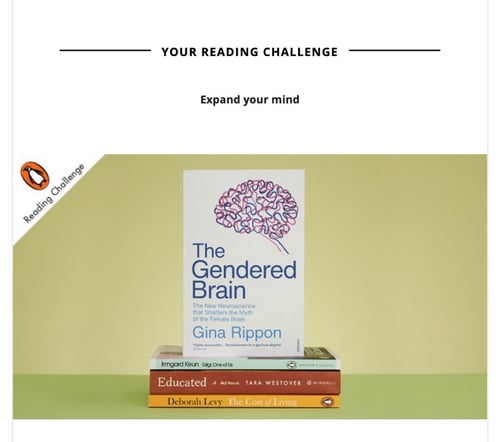
And the icing on the cake: customer base segmentation is an inexpensive marketing strategy that is accessible and easy to apply because there are a lot of services to automate the segmentation of your emails and undertake tests.
→ Be well prepared: marketing tools to boost productivity
How to segment your customer database
Criteria that you can apply for email segmentation
- Location: Knowing the location of your users is quite useful to segment content and news linked to specific regions or places, in addition to adapting the language and the currency in which prices are shown. Many brands send segmented correspondence by city about workshops being held in their physical shops, pop-up stores, and even free sports events. It is also useful to find promotions, sale periods, and share specific catalogs (like the exclusive Sales Layer Instant Catalogs feature). The zip code is normally used as a reference for this type of segmentation.
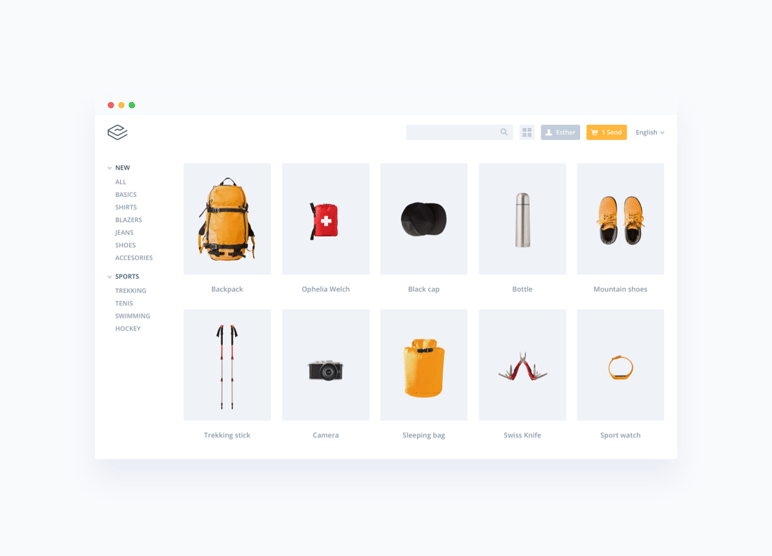
- Demographic data: Age, gender, income level, religion, ethnicity, etc. Personal data can be more difficult to collect and not all of that data will be useful for your segmentation, but age and gender are basic pieces of information.
- Job title: This could be interesting for you if you sell a product or service directed towards professionals from different categories.
- Interests, opinions, activities, values, and behaviors: You can get to know your clients more through their wish list, the categories that they most visit on your site, the blog posts that they spend most time on, etc.
- Actions based on email: The number of times that a user opens your emails and clicks on a piece of content they contain, like a CTA or links.
- Actions based on use (for software or apps): For example, Spotify tells users that they are amongst the top 1% of worldwide fans of a particular musician based on the number of times they play his or her songs or tracks. And, of course, their annual summary is something that brings them marketing promotions each December.
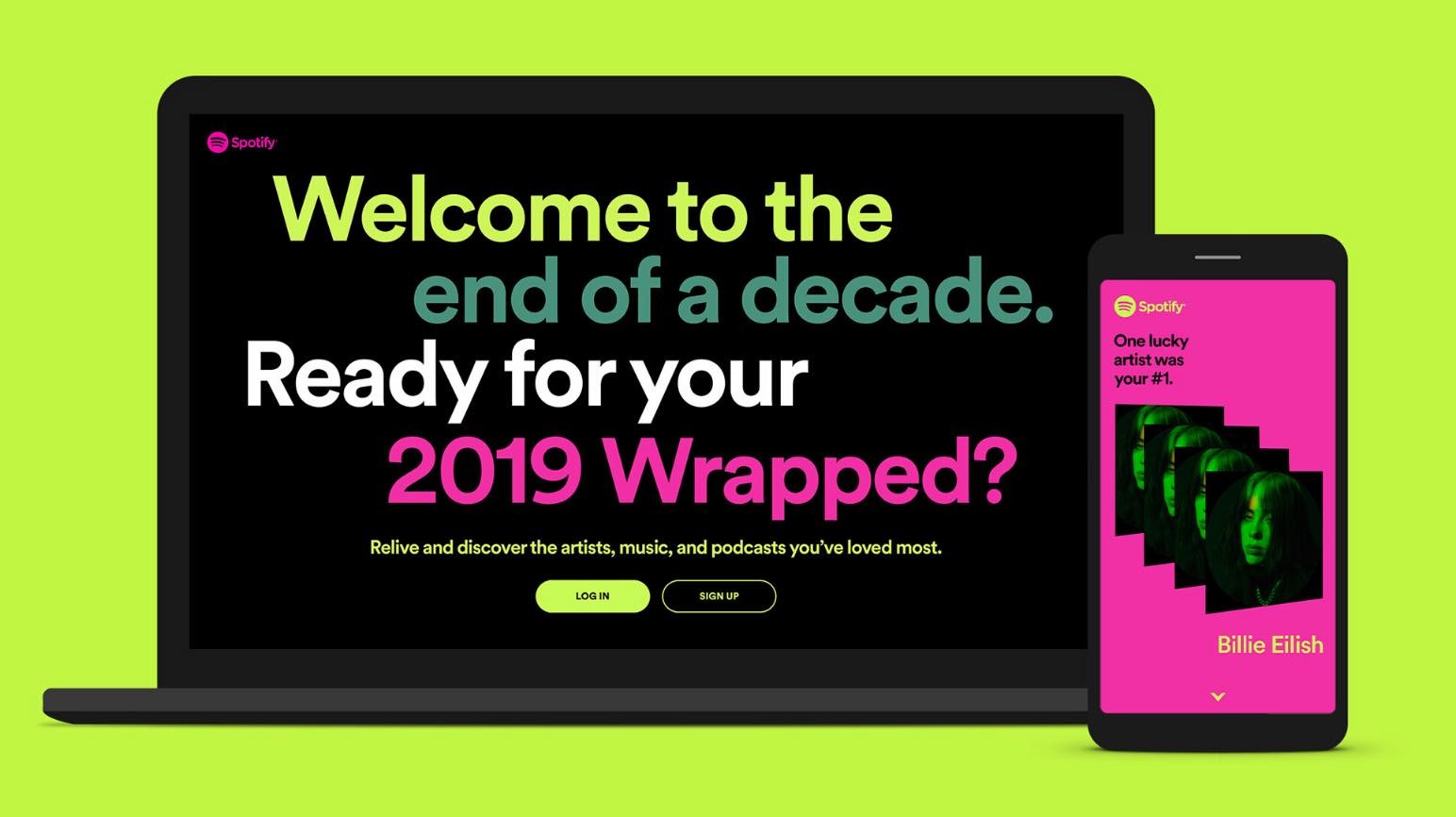
- Actions based on purchases (for ecommerce): The number of times that a user has interacted with a suggested related or recommended product when making his or her purchase or visiting an online shop.
- Purchase types: Based on the products and categories that customers normally purchase, you can adapt related product suggestions (cross-sell) and suggestions for more expensive or additional products (upsell).
- Purchase frequency and average cost: You can suggest products with different prices depending on the common purchase habits for each customer type.
- Type of device used: If queries are made from a mobile app or from the web.
- Customer type or engagement: It is of utmost important to know what customers are loyal to your brand and what ones are new or visitors who have not purchased anything yet. For your loyal users, you can create content that continues to shore up and increase the value of the purchase, while for new leads you’ll have to provide brand knowledge and ‘education’ on your product or service (testimonials, reviews from satisfied customers, case studies, etc.). For this type of segmentation, use the date on which the customer registered or subscribed.
These are some of the profiles for regular customers that you can identify on your online shop:
- Visitors who spend more than one minute on a product page.
- Visitors who check a product page more than 3 times per week.
- Visitors who visit more than 5 different product pages on your website.
- Visitors who have checked your contact section or shipment terms and conditions.
- Users who have opened your last 3 emails.
→ Discover more: What is upselling and how can you use it?
Creativity is endless: you can combine several pieces of segmentation criteria in your marketing campaigns.
For example, segmentation applied to customers who are over 30 and normally spend more than €100 per purchase and have been active on your site in the last 3 months.
And the contrary: a group that has been inactive for a while and whose members are of an age range that is less interesting for you, with said members spending less on average, normally taking advantage of the sales or discount coupons, or never having made a purchase.
While the first group may be more attracted and motivated by new items and exclusives, the second group would find bargains and slogans like ‘clearance’ more motivating.
Some email marketing strategies calculate and award points to each customer depending on their activity, level of engagement, or conversion value: for example, a client with 10 points as opposed to one with just 2. Use that system if you prefer numerical classification.
→ What is cross-selling? An excellent strategy to discover products

Steps to segment your customer database
1. Decide on the type of segmentation that you want to apply (what criteria of those mentioned before you will use and how you will combine them).
2. Organize the data from your customer database in a way that is relevant for your strategy: age, gender, location, purchase history, etc. You don’t have to do surveys and you can collect this data from your usual download and purchase forms.
3. Create your segmentation lists based on a criterion or KPI of interest for your business goal or marketing strategy, naming them and giving them a description. You can also give your subscribers the option to sign up for a specific list, like in the prior example of Penguin Books, and the option to set the frequency of emails (weekly, monthly, etc.).
4. Prepare content that is adapted to each segment and send it to the right lists. Remember that you can activate automated workflows and do A/B testing to compare results.
Keep studying, monitoring, and improving. The key metrics to evaluate your campaigns are the email open rate and click-through rates.
→ Analyze everything: KPIs for ecommerce that will help you to make business decisions
What to do with inactive users in your marketing campaigns?
Should you include ‘ghost’ users in your email segmentation strategy?
Perhaps: study them to decide if you can try some last resort actions to bring them back, or definitively remove them from your lists.
Some criteria to analyze inactive users:
- If they open your emails but do not interact with the contents, they may be interested in the contents but not in making a purchase.
- If they visit your site but do not open your emails, they may be interested in the brand, but not in the contents they receive.
- If they have not opened any emails or have not visited your site for several months, they should be put on a slower retention list, as their conversion is non-existent.
5 email marketing segmenting strategies
After the purchase
You can segment the contents of your emails by recent purchases (with suggestions to cross-sell, by saying something like ‘You may also be interested in’) or by purchase history.
For example, if a customer normally buys vases, use a promotional email to highlight sales on that type of product or on dried flowers. If a customer has recently bought something expensive, your next contact may encourage him or her to go for something a little more upscale, like an exclusive collection that has just arrived or a subscription to a service for early access or new launches.
After leaving the shopping cart
These users are at the bottom of the sales funnel.
But don’t lose hope with them: a segmentation strategy may help you to recover clients who didn’t go through with a purchase. Notice if they open the emails reminding them about the items in their cart, if they click on them, and if they go back to their cart on your site without having opened the email.
All that will give you clues about the obstacles that your customers may find and what may be the reason for them to decide not to make a purchase.
→ More strategies: how to retain loyal customers to increase your conversions
After subscription to the newsletter
These users are very attractive for you because they are at the top of the conversion funnel.
In this age of spam and demanding users, a new subscriber means someone is very interested in you. It may be that a percentage of them are competitors who wish to analyze how you go about your emailing, but the majority will be potential customers that you can secure with personalized contents from the very start.

After downloading contents or a free trial
In this section, it is very useful to personalize the contents of your follow-up emails to align with the downloaded material so as to continue suggesting other contents along the same lines and to not repeat things the subscriber has already seen.
After a survey
This step equates to effort by your customer service or customer success department. The data that Customer Success can gather through online questionnaires, when speaking with customers, or upon launching a private survey is very valuable for marketing purposes. It will allow you to better profile your customer segments as you will be familiar with their usual question and interests.
Conclusion
Segmentation of customer databases and promotional emails and correspondence is a must to shore up a business’s conversions.
Using segmentation does not require a lot of resources thanks to automated email marketing software that can tie in with your ecommerce or CMR platform.
At the end of the day, segmenting is the result of sharing valuable knowledge about your customers inside your company, bringing the brand to the user more precisely, and avoiding adding too much extra noise to inboxes around the world.
Your customers are unique and your contents should also be that way: start by taking care of the quality of your product information with a PIM solution (that you can try for free right here) and draft more attractive email campaigns—always with the right recipients in mind.




.png?width=520&name=Blog%20Partner%20(3).png)

.png?width=520&name=Blog%20Partner%20(1).png)


